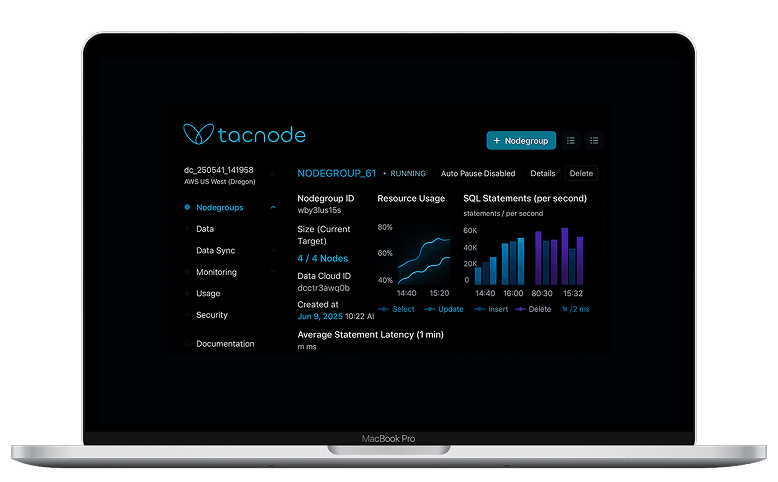TACNODE FOR ECOMMERCE
Keep up with every click, cart, and customer — instantly
From personalization to inventory optimization, Tacnode helps eCommerce teams act on fresh behavioral, transactional, and operational data — the moment it happens.
Book a demoTHE PROBLEM
Your customers move fast. Your data stack shouldn’t slow them down.
In ecommerce, delays cost revenue and loyalty. But batch jobs, stale dashboards, and disconnected systems make it hard to keep up with behavior as it changes.
Customer behavior outpaces your data
By the time your systems register intent, the moment of influence is already gone — or the customer is.
Inventory, cart, and order data are out of sync
Disconnected systems mean customers see out-of-stock items, ops teams can’t forecast demand, and fulfillment lags behind reality.
Static snapshots miss operational blind spots
Hourly updates can’t catch spikes in fraud, failed deliveries, or supply chain slowdowns. And by the time someone sees it, it’s too late to fix.
ECOMMERCE USE CASES
How Tacnode helps ecommerce teams act instantly — and intelligently
From clickstream to checkout, Tacnode gives commerce teams real-time access to customer behavior, product signals, and operational data — all in one place. No batch delays, no blind spots — just the context you need to personalize, optimize, and convert.
Real-time customer journey tracking
Capture and correlate clicks, views, searches, and carts as they happen — across sessions and channels. Tacnode makes behavioral data queryable in real time, so you can intervene or personalize before the moment passes.
Dynamic merchandising + recommendations
Power rec engines and promos with live behavioral, pricing, and inventory signals. Tacnode helps you deliver relevance that reflects what the customer just did — not what they did yesterday.
Flash-sale and surge visibility
Monitor spikes in traffic, stockouts, or conversion shifts as they occur. Tacnode handles high-volume ingestion and instant queries, so teams can react mid-sale — not after revenue is lost.
Fraud detection + fulfillment integrity
Fraud detection + fulfillment integrity
Stream true real-time order activity, device fingerprints, geolocation, and fulfillment events into your fraud and delivery logic. Tacnode enables instant correlation across your most important signals, helping you flag suspicious behavior early, prevent chargebacks, and detect fulfillment failures before they hit your customers — or your bottom line.
Stream true real-time order activity, device fingerprints, geolocation, and fulfillment events into your fraud and delivery logic. Tacnode enables instant correlation across your most important signals, helping you flag suspicious behavior early, prevent chargebacks, and detect fulfillment failures before they hit your customers — or your bottom line.

Dive into the Context Lake
Explore Tacnode's Architecture
Flexible and transparent pricing
View Pricing